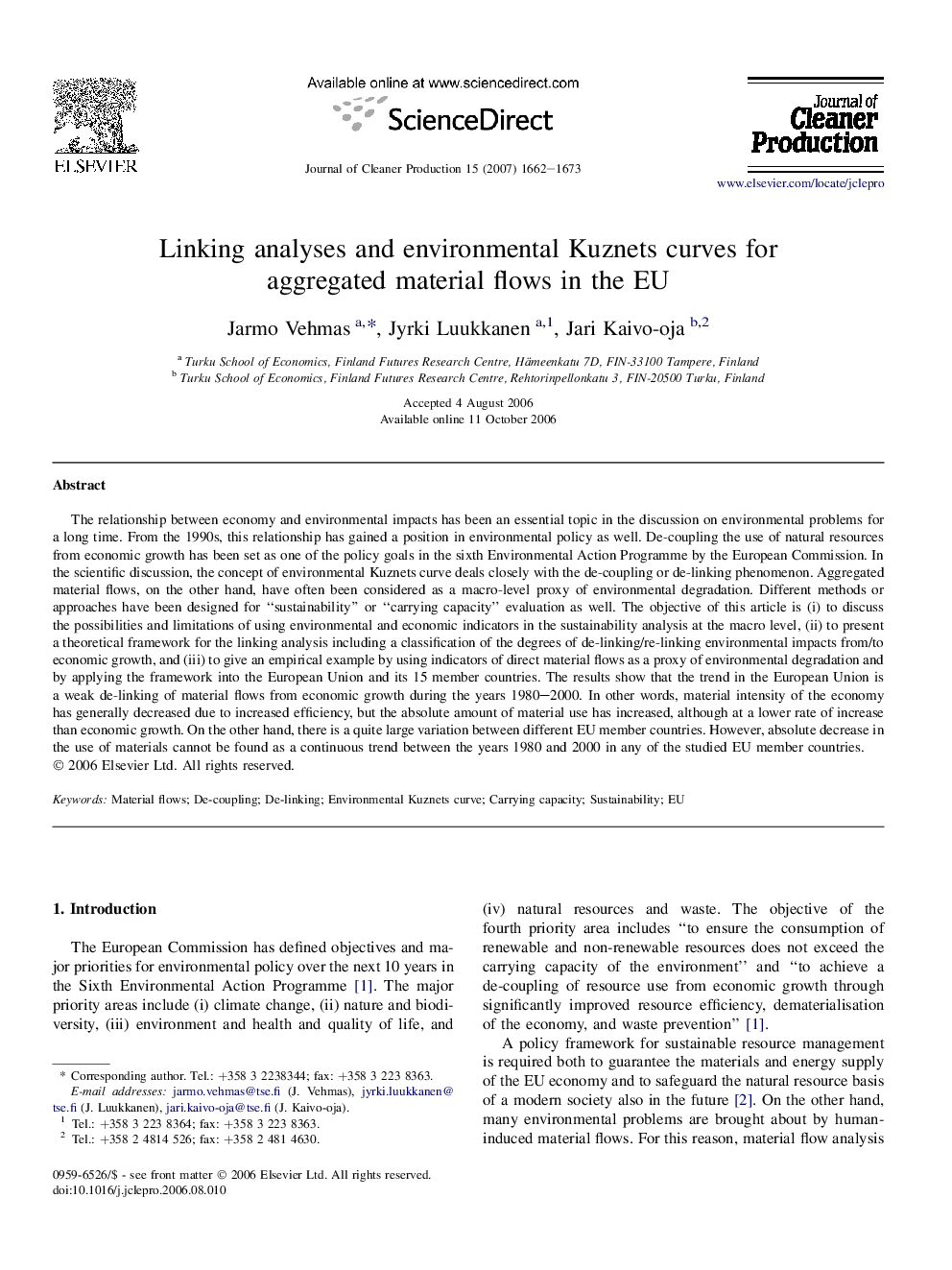| کد مقاله | کد نشریه | سال انتشار | مقاله انگلیسی | نسخه تمام متن |
|---|---|---|---|---|
| 1747021 | 1018139 | 2007 | 12 صفحه PDF | دانلود رایگان |

The relationship between economy and environmental impacts has been an essential topic in the discussion on environmental problems for a long time. From the 1990s, this relationship has gained a position in environmental policy as well. De-coupling the use of natural resources from economic growth has been set as one of the policy goals in the sixth Environmental Action Programme by the European Commission. In the scientific discussion, the concept of environmental Kuznets curve deals closely with the de-coupling or de-linking phenomenon. Aggregated material flows, on the other hand, have often been considered as a macro-level proxy of environmental degradation. Different methods or approaches have been designed for “sustainability” or “carrying capacity” evaluation as well. The objective of this article is (i) to discuss the possibilities and limitations of using environmental and economic indicators in the sustainability analysis at the macro level, (ii) to present a theoretical framework for the linking analysis including a classification of the degrees of de-linking/re-linking environmental impacts from/to economic growth, and (iii) to give an empirical example by using indicators of direct material flows as a proxy of environmental degradation and by applying the framework into the European Union and its 15 member countries. The results show that the trend in the European Union is a weak de-linking of material flows from economic growth during the years 1980–2000. In other words, material intensity of the economy has generally decreased due to increased efficiency, but the absolute amount of material use has increased, although at a lower rate of increase than economic growth. On the other hand, there is a quite large variation between different EU member countries. However, absolute decrease in the use of materials cannot be found as a continuous trend between the years 1980 and 2000 in any of the studied EU member countries.
Journal: Journal of Cleaner Production - Volume 15, Issue 17, November 2007, Pages 1662–1673